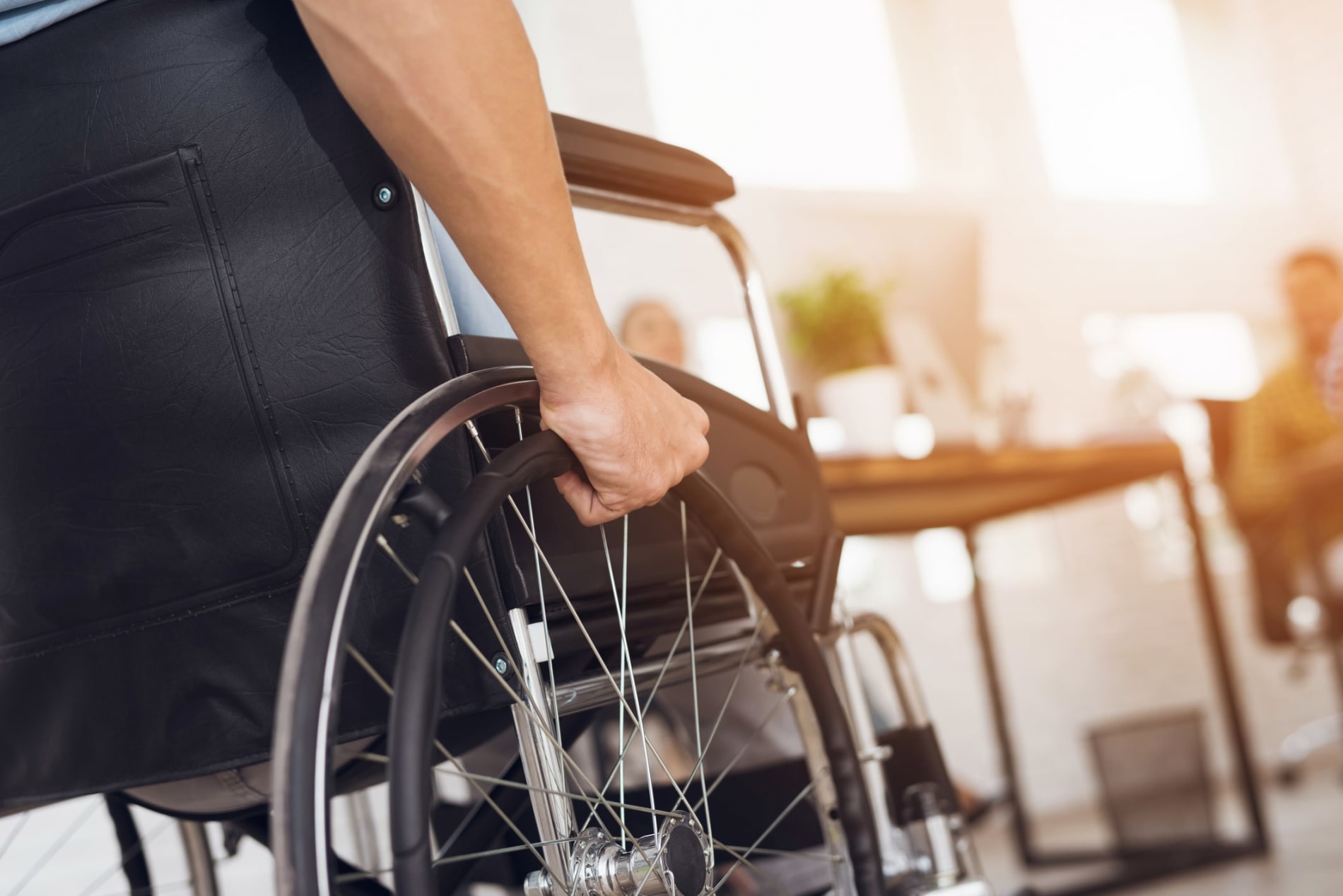Pairing with peer coaches to provide a more social model of care for those living with spinal cord injury
A young man – let’s call him Jarrod – looks around at the other men in the rehab unit. Many are under 35, many (like him) are in wheelchairs, and all are living with SCI (spinal cord injury). All are struggling in their own way with this sudden and life-changing condition that’s impacting every part of their lives.
Jarrod had been living an active life until the accident. Now, he’s on the steep learning curve of rehabilitation, of re-learning everyday tasks – such as bed mobility, cooking, dressing, exercise – and considering what the future might look like. For a while there, he didn’t want to see anyone or do anything.
Today, Jarrod’s physio session is different. The physio is joined by a co-facilitator who’s clearly living with SCI. Not just living with it, they’re making it work, for real.
And if they can do it, thinks Jarrod, so can I.
Leading your best life
This is the story of how researchers from Monash University collaborated with healthcare practitioners, social care providers and those living with SCI to explore how they could think and behave differently to support young men like Jarrod.
According to Professor Andrew Nunn, Director of the Victorian Spinal Cord Service at Austin Health, approximately 100 people will sustain a spinal cord injury in Victoria per year, with approximately 35% of them being young males. That’s a third of this group.
So, how do we challenge current ways of thinking and shift from a traditional medical model to a more social model of care?
Since 2020, BehaviourWorks Australia (part of the Monash Sustainable Development Institute) has partnered with Austin Health, AQA (funded by the Victorian Transport Accident Commission) to introduce interventions to help engage and equip young men to thrive.
‘I was sceptical in the beginning.’ – Person living with SCI
So where do you start to try and address this issue? Following the BehaviourWorks Method, the project was divided into three phases – explore the problem, deep-dive into the drivers and barriers, and apply these insights to develop an intervention.
Exploration
Along with reviewing the evidence on engaging young males (not limited to those living with SCI), stakeholder dialogues were held with those working with young men, as well as members of the spinal cord injury community.
Deep dive
In-depth interviews with young men living with SCI were conducted to gain a real understanding of the drivers and barriers to engagement. Two co-design workshops were held to generate ideas and determine behaviours to target, people to target, and what possible interventions might look like.
Application
Three interventions were decided on – immersive communication skills training for practitioners, partnering allied health clinicians and peer coaches (people living with SCI) in the rehab setting, and wheelchair skills training.
‘[Peer coaches] offered just little tips and tricks that they try.’ (Person living with SCI)
BehaviourWorks researchers made a few key discoveries in their quest to find the drivers and barriers of engagement.
One was the lack of people living with SCI working in hospital and rehabilitation settings, and another was that men like Jarrod often struggled to relate to able-bodied professionals who were trying to model skills or provide support.
Anecdotally, researchers had heard that peer coaches (people with lived experience of SCI who have the experience and training to co-facilitate sessions with clinicians) had previously worked with clinicians they knew on an ad-hoc basis. How could this be scaled up to provide peer support to the broader allied health team?

Pairing with peer coaches
A potential solution is pairing allied health clinicians, such as physiotherapists and occupational therapists, with peer coaches to co-facilitate therapy sessions.
All three groups – allied health clinicians, peer coaches and newly-injured young men – responded positively to this intervention.
They appreciated the structure, the range of insights peer coaches could share about all sorts of things, and, for those living with SCI, the real-world applicability of the skills being learned.
One participant said:
“I think it was great having them around. The advice that they offered was very useful. Just the fact that they've done it in their day-to-day lives, they could offer advice that you wouldn’t usually get from someone that's able-bodied, things that I wouldn't have thought of.
“Like I said, I was sceptical in the beginning. I wasn't really interested in someone coming in. Yeah, but then after I did the first, I would say, two or three sessions, I was like, ‘Oh, man, this is good’.”
“I think the more we can incorporate people with lived experience into this setting, the better. If you’re in that situation and surrounded by able-bodied people, having someone in the chair who’s out in the community, being a role model, working full-time, family life. I just think that’s hugely beneficial.” (Allied health clinician)
A useful behavioural tool
To reflect on the sessions they had, and think about how to improve them next time, the researchers developed a behavioural reflection tool.
Designed to be short and easy to use, it helped bond allied clinicians with their peer coaches by asking not only what worked, but what can be gained by working together.
They were also asked to decide on something they intended to do differently next time – this is known as an implementation intention – and to write it down.
When we write something down and commit to doing it in our minds (as well as share it with others), we’re more likely to follow through with that behaviour.
Where to from here?
While it’s early days, this approach could be not only expanded to bedside education with nurses, social work or even psychology, it could benefit other ages and genders.
A larger trial is being proposed to gather more evidence, as well as including an economic evaluation to see if other benefits might follow in areas such as independence, returning to work, increased engagement in the community, reduced avoidable hospital readmissions, and so on.
With special thanks to Austin Health, the AQA, and the Transport Accident Commission (TAC). You can read the report here.
.







